In recent years, knowledge management has become something of a buzzword.
That’s no surprise, considering the benefits it can bring to a company. With an effective knowledge base in place, companies can reduce costs, enhance productivity, improve decision-making, and support innovation.
But although many are talking about it, few get it right.
In this article, we’ll walk you through the process of implementing a winning knowledge management system and enable you to reap all the benefits that it brings.
Define Your Knowledge Management Objectives
A knowledge management system can serve many purposes. However, trying to build a system that does too many things at once will inevitably result in chaos and won’t serve your company efficiently.
Therefore, the key is to define a clear objective for your knowledge management system and focus all your efforts towards achieving it.
To form a clear objective, you can ask yourself some basic questions:
- What are the issues the employees struggle with the most?
- What challenges do you want to overcome?
- How do you want a knowledge base to improve your business?
By answering these simple questions, you'll be able to define your objectives in no time and lay the foundations for an effective knowledge base.
For instance, when creating its knowledge base, Honda had a clearly defined objective informed by a major challenge the company struggled with.
While designing the cars, the issues that usually arise in the development process would remain undetected until the later stages of production. That led to costly reworks and delays that the company wanted to avoid in the future.
So their aim was to centralize the data tied to these issues, in order to understand the design problems better, improve the engineers' work, and provide a better experience for the drivers.

Source: IBM MediaCenter
The perfect solution for them was to use the IBM Watson Discovery software to capture and systemize the enormous amount of data and documentation about past problems and solutions.
You can see how the Watson Discovery software looks in action in the screenshot from Niklas Heidloff, a developer advocate for IBM.
The picture shows the Discovery user interface, where users can enter queries that return incident reports involving Honda cars.
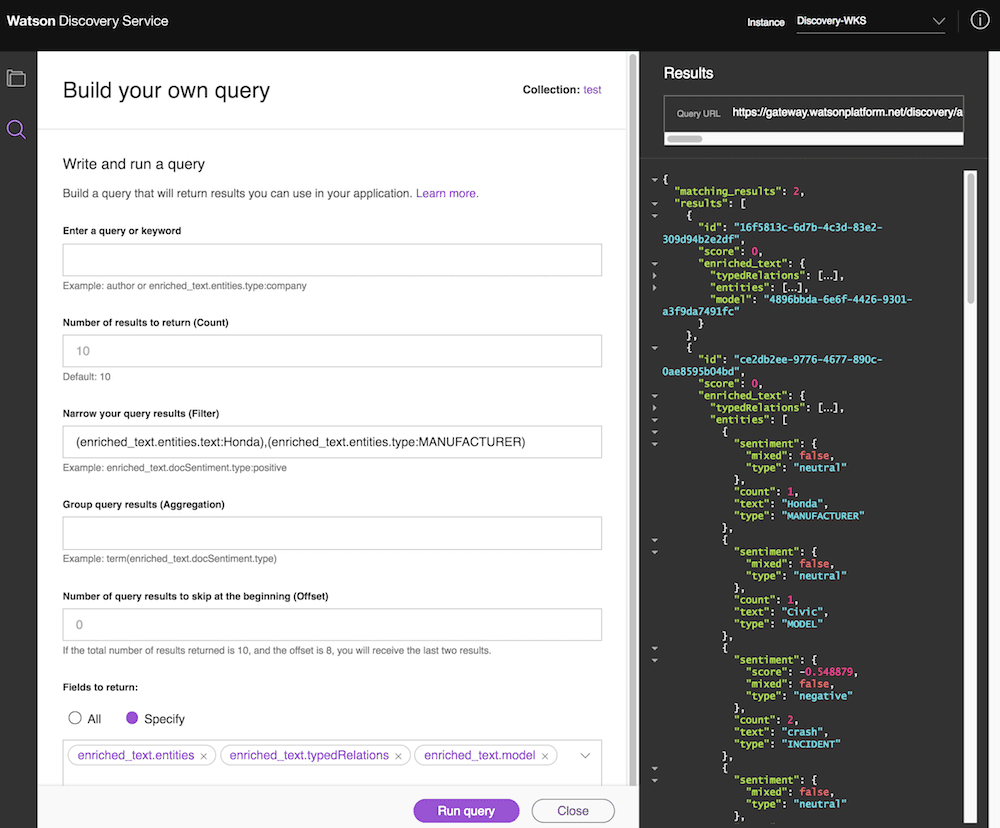
Source: Niklas Heidloff
With the help of this tool and a clear objective in mind, Honda has created a knowledge base that enables engineers to respond to quality challenges more quickly and thus reduce future reworks.
This example shows us that by simply stating the objectives initially, companies can stay focused when finding the perfect knowledge management solution for their needs.
Outline the Knowledge Management Strategy
When you successfully define the objectives of your knowledge base, the next step should be determining your knowledge management strategy.
At first glance, this may sound like a challenging task, mainly because there is no one-size-fits-all approach. Every company is unique, and it has its own needs and preferences when it comes to technology, business goals, and workforce.
When developing your strategy, there are certain elements you should keep in your mind and try to touch upon with the system you’re building.
Here are some of them:
- People who will be contributing and using it
- Content that will populate it
- The culture that will grow from it
- The work processes it will cover
- The technology that will house it
If you focus on these areas, you'll be able to create an outstanding strategy that will help you avoid the usual pitfalls of building the knowledge base.
For example, you’ll avoid investing in a system that no one in the organization actively uses.
Let's see how Nalco Water, a water treatment company, formed their strategy by focusing on the people who needed a knowledge management system the most, provided the exact content they needed and found the perfect technology to house their system.

Source: Nalco Water
The people who needed a knowledge system the most at this company were the sales representatives who spent most of their time on the road or at customer sites.
Nalco noticed they lacked a centralized repository that their field engineers could easily access and find answers to customers' questions (the content).
So they've decided that, as a part of their knowledge management strategy, they'll create an app that will allow employees to search and download technical information directly on their smartphones, providing them with a solution when they are on the road (the technology).
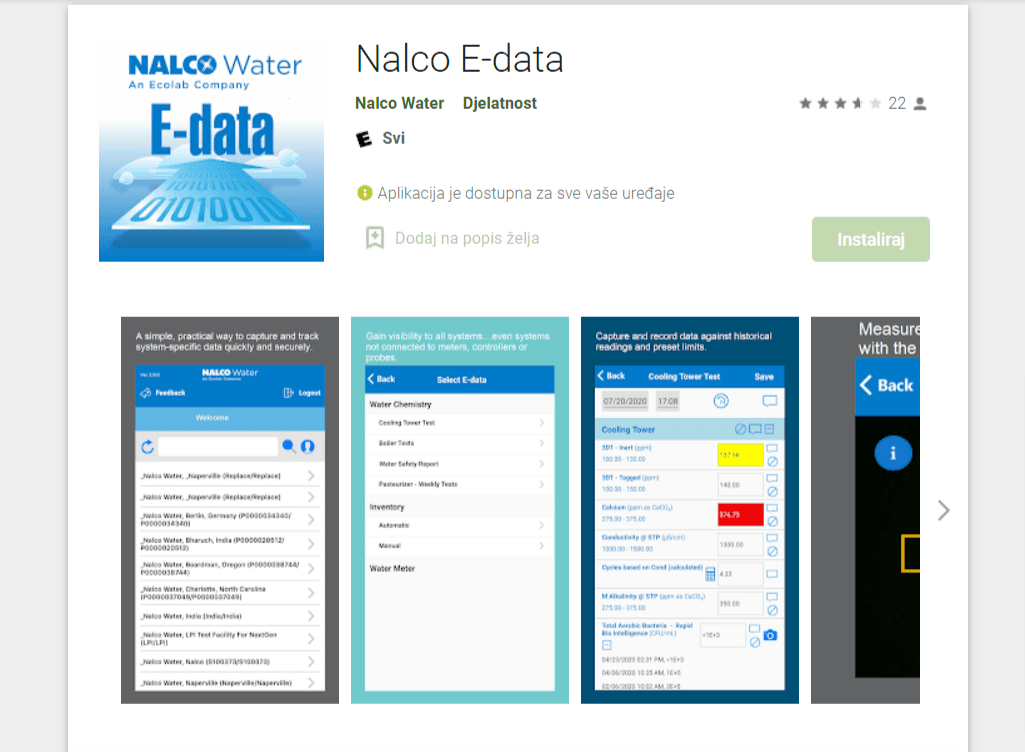
Source: Google Play
They’ve also realized that their app should have advanced search, sorting, and filtering features so that employees who spend a lot of time traveling can easily find the technical information they need.
This example shows that a preplanned strategy can go a long way in creating a quality knowledge base. It enables companies to think about the knowledge base on a structure level and avoid possible mistakes during the process of building it.
Pick the Right Knowledge Management Tool
With objectives and strategy out of the way, it’s time to focus on one of the essential aspects of knowledge management—choosing the right software.
We are not stressing the importance of selecting the right knowledge management tool without reason. The functionality, convenience, and ease of use of your knowledge management software will be the deciding factor on how much your system is used.
Let’s back that with real data. Surveys show that the value of information is perceived as higher where information is easy to access.
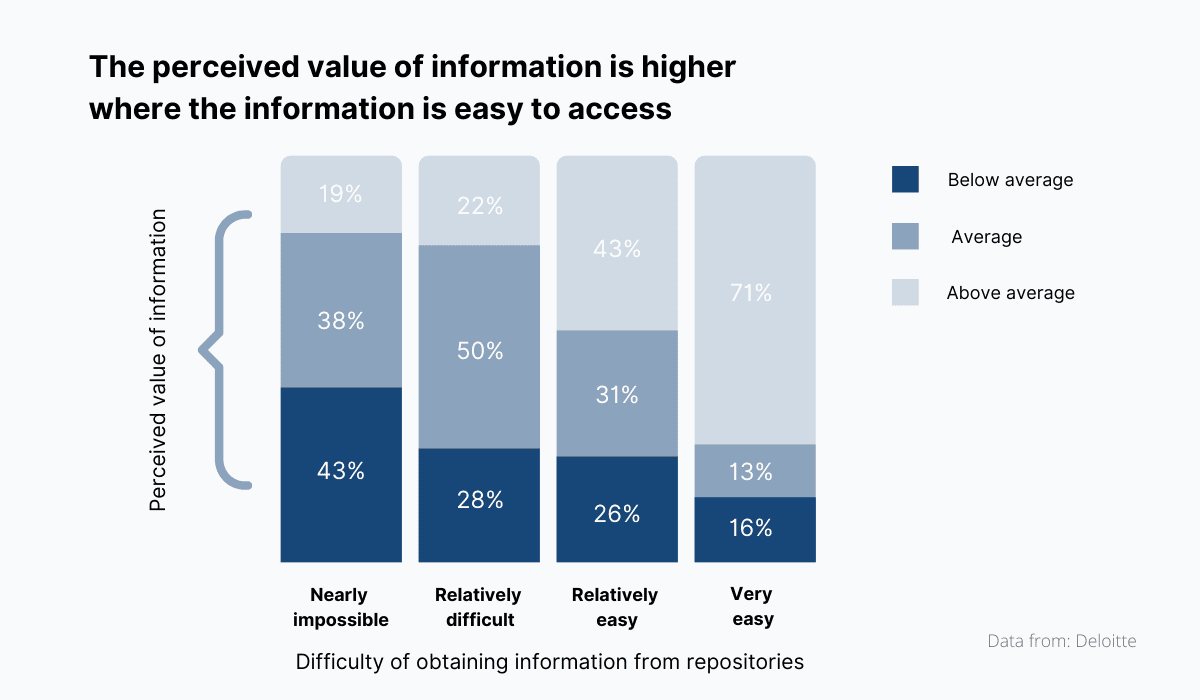
Source: Archbee
In other words, if employees can't easily find content, they'll consider it as not highly valuable. And if searching for information is challenging and they perceive the results as unsatisfying, employees will stop using the knowledge base. And if your knowledge base isn’t in use, there’s no point to it, is there?
You can break this vicious circle by simply choosing the right software. Here are some tips to help you in your decision.
These days, many companies opt for cloud-based documentation software because it allows employees to access the knowledge base at any time and from anywhere.
Another essential feature companies search for is an intuitive user interface, as it enables effortless navigation.
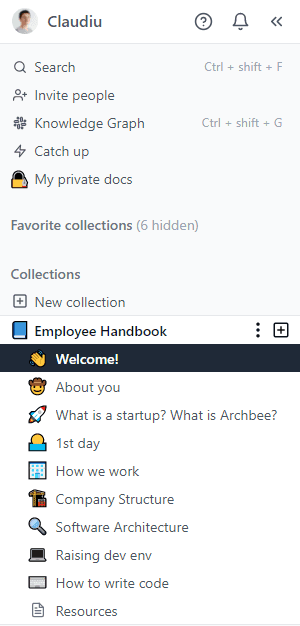
Source: Archbee
Finally, third-party software integration is something most companies pay special attention to, in order to be able to continue using the tools they already rely on in their everyday operations.
The knowledge management system you decide to implement should offer a similar range of options.
For example, our own documentation software, Archbee, offers integrations with over 20 useful tools, like Slack, Figma, Trello, GitHub, Airtable, and Google Analytics, to name just a few.
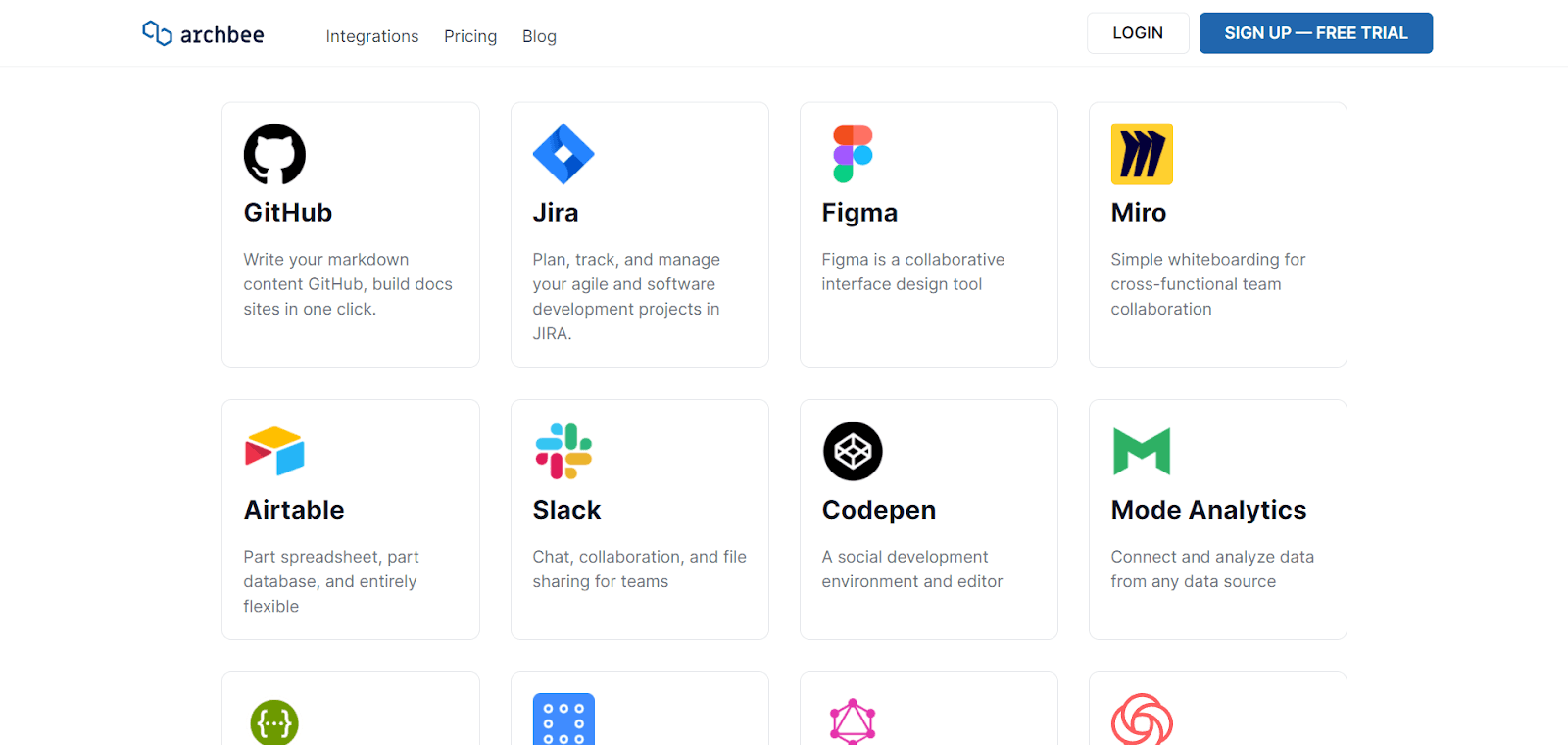
Source: Archbee
Installing and setting up these integrations is a breeze.
For instance, if you want to integrate Archbee with Slack, all you have to do is create a channel for Archbee in Slack, click “connect to Slack” on the integrations page, and Archbee will take care of the rest.
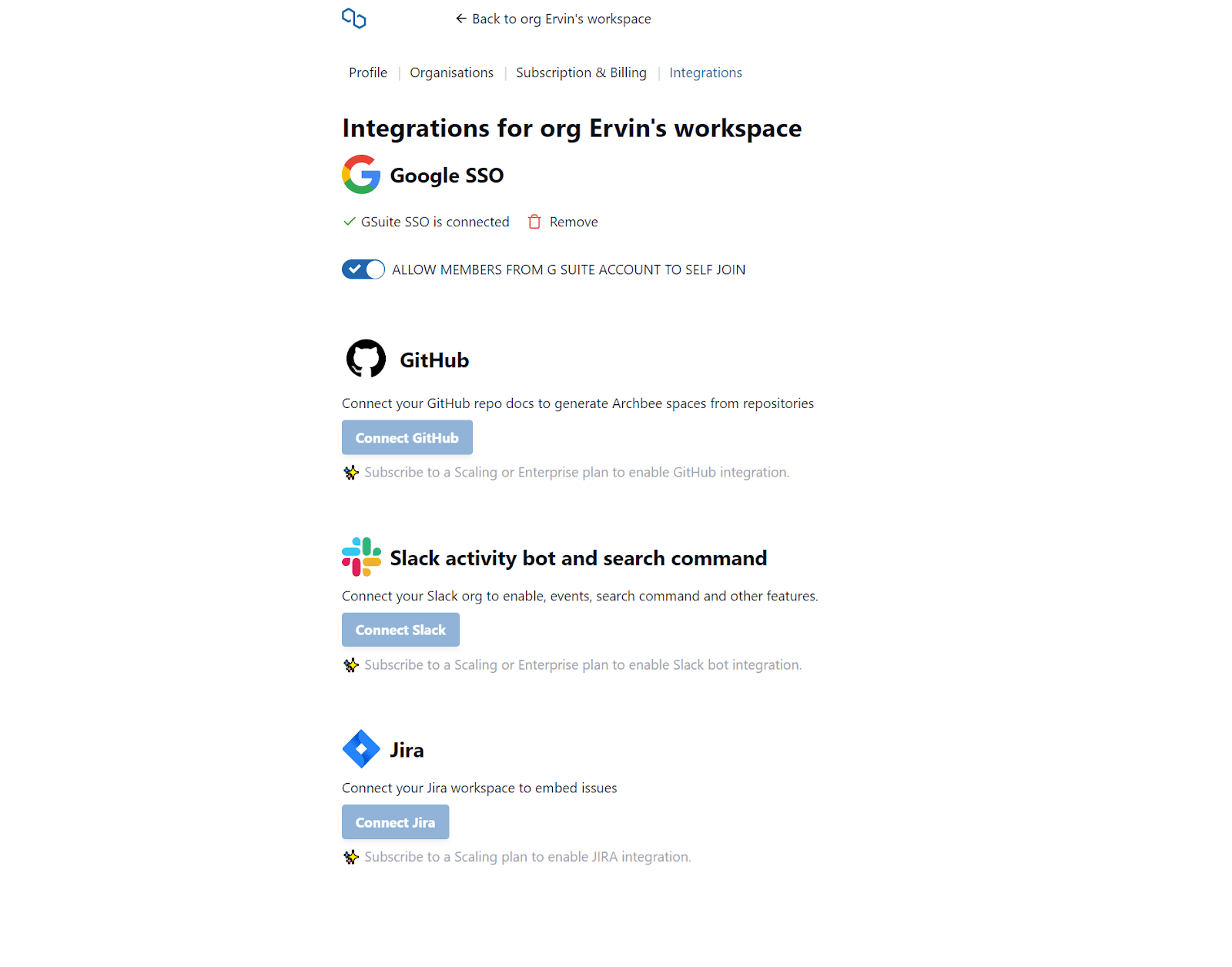
Source: Archbee
After that, every time you share a document or invite a new team member, everyone in the Archbee channel on Slack will be notified.
Once you’ve chosen the perfect software solution for your business, you can roll out your sleeves and prepare to start building your knowledge base. But more about this in the next section.
Assess the Current State of Knowledge
After you've established your objectives, defined your strategy, and selected the knowledge management software, it's time to evaluate the current state of the company's knowledge.
By assessing what content is good enough to be incorporated into the knowledge base and discovering knowledge gaps, you'll have a much clearer picture of the content you have at your disposal.
As it's essential not to clutter your knowledge base, you should include only the content that'll solve employees' problems and answer their questions.
But assessing explicit knowledge is probably the easy part of the process.
Evaluating knowledge gaps and employees’ tacit knowledge will probably be more challenging, and you’ll most likely have to use your detective skills.
By asking other employees questions about what kind of your knowledge your company needs and what it actually has, you’ll be able to determine what type of knowledge is missing.
This will enable you to decide which areas of your knowledge base require more attention and improvement.
At the same time, you should also pay special attention to your employees' skills, abilities, and experiences, or so-called tacit knowledge.
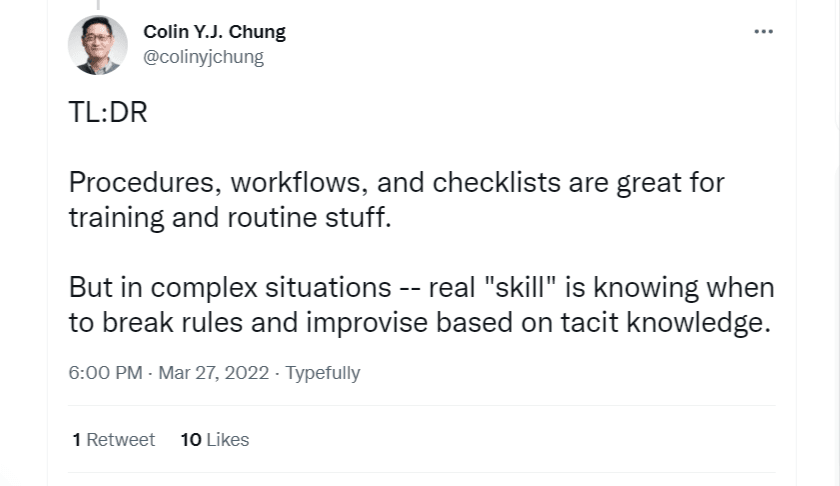
Source: Twitter
As it represents expertise that took employees years and years to acquire, tacit knowledge could prove indispensable for your company's success.
Just imagine the scenario in which engineers that are experts in their field decide to leave a company. By taking their valuable knowledge with them, they can significantly jeopardize the company's current operations.
So assessing your company's tacit shouldn't be ignored, especially considering that 88% of executives say their company is experiencing higher turnover than usual and 65% of employees state they're looking for a new job.
And that means that soon you’ll maybe have to face personnel shortage and loss of tacit knowledge.
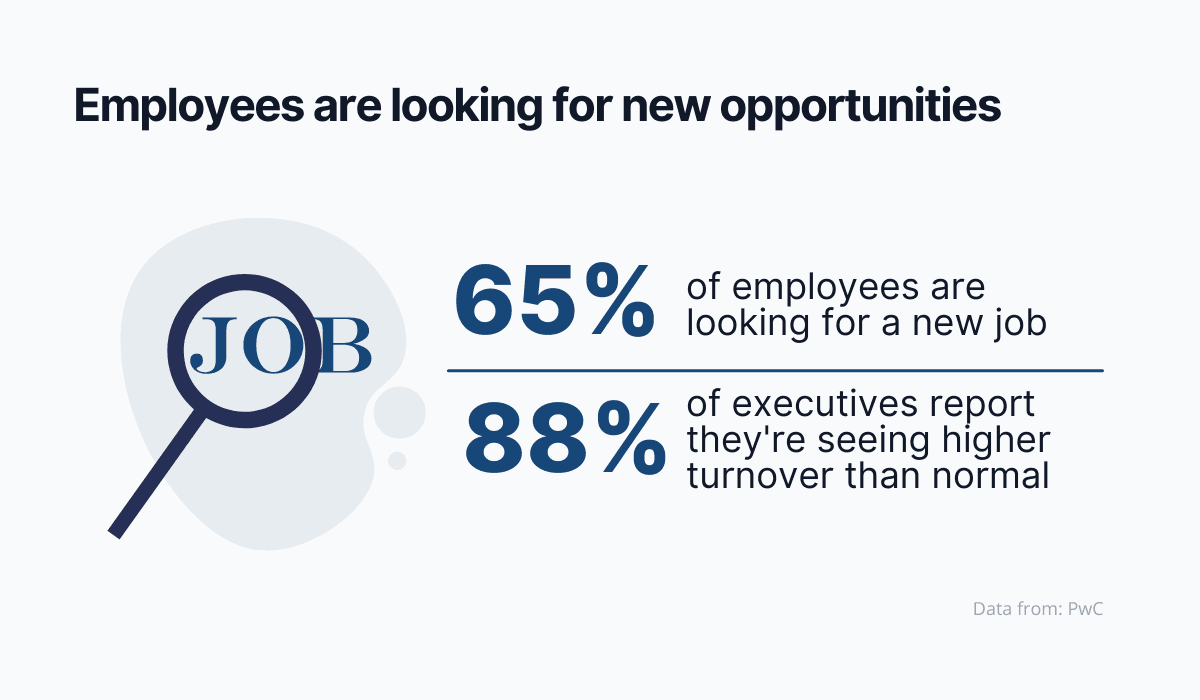
Source: Archbee
From everything that's been said so far, it's clear that assessing the information is an integral part of the process and shouldn't be avoided.
Only when you truly understand the nature of your company's knowledge will you be able to determine what kind of improvements and corrections are needed.
Capture Relevant and Important Knowledge
The success of many companies depends largely on their capability to capture important knowledge.
This isn’t so hard to imagine—the more knowledge about the company’s processes, strategies, customers, products, and competitors you have, the more likely you are to be successful in solving problems and have better decision-making skills.
Unfortunately, as we already discussed in the previous section, a lot of the relevant knowledge remains in the minds of your employees or stored somewhere in emails, Slack conversations, or employees' computers.
While you probably already have a wealth of company knowledge that has been accumulated over the years and that can serve as a good base for your knowledge library, the question is how to capture that 80% of tacit knowledge which gives your employees a competitive edge in their daily work.
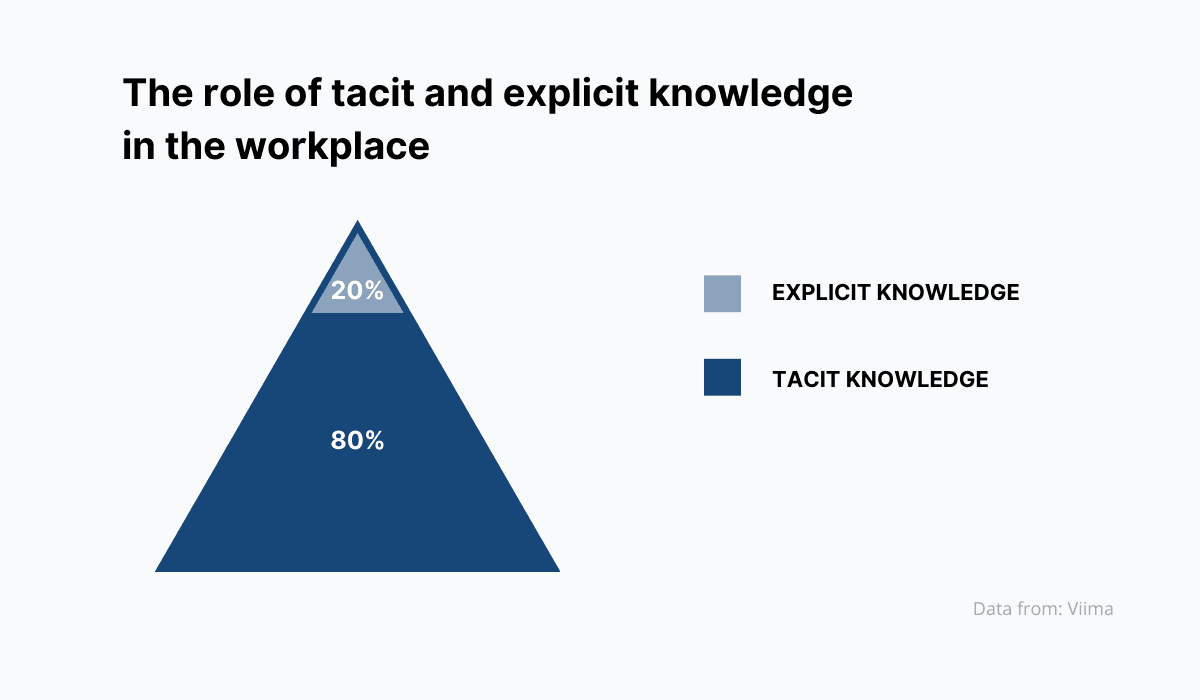
Source: Archbee
There are many ways you can do that, and we’ll mention just a few examples from real companies.
For example, GitLab, a DevOps platform that works exclusively remotely, had to find a way to quickly share all relevant content among its remote employees.
They solved this problem by recording meetings, conferences, presentations, and other important virtual events and storing them in their internal knowledge resource called GitLab Unfiltered or their YouTube channel.
These resources are full of the knowledge employees have contributed to the comprehensive knowledge base GitLab boasts today.

Source: YouTube
As everyone in the company has access to these platforms, they can get important knowledge in no time and use it in their work.
The other example comes from Illuminate Education, Inc., an education technology company.
They decided to integrate a response management software RFPIO LookUp with Slack to capture the tacit knowledge of their employees.
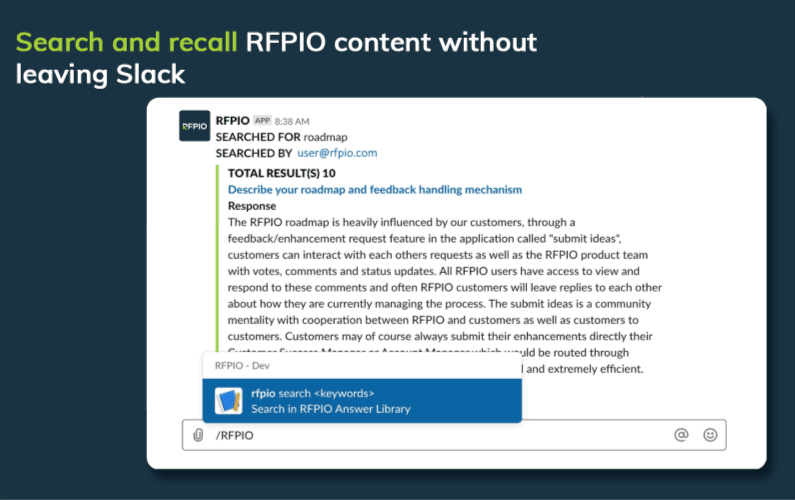
Source: Slack
As a result, currently everyone in their team uses Slack to ask questions.
Every time they have questions, with the LookUp tool they can simply use @mentions, tags, or hashtags in Slack to find the answers. Plus, they later add the answers from Slack to their knowledge base for future reference.
As you can see, capturing relevant knowledge doesn’t have to be complicated, especially since there are many modern tools available today. And it’s worth the effort considering that the benefits for your company’s success can be impressive.
Review and Update the Documentation
So you finally collected all the documentation and created your knowledge base. But just because you have your knowledge management system in place, it doesn’t mean that your work is done.
Knowledge management is not a one-time effort but an ongoing process that needs constant revisions and updates.
So keep a close watch on the questions your employees are perpetually asking, as well as the product changes that need updates in the documentation, and overall satisfaction of the team members with the knowledge base.
A McKinsey study shows that, on average, employees spend about 20% of their day trying to track down information.
So make sure you’re not a part of these statistics, and hold onto the quality standards when it comes to your knowledge base.
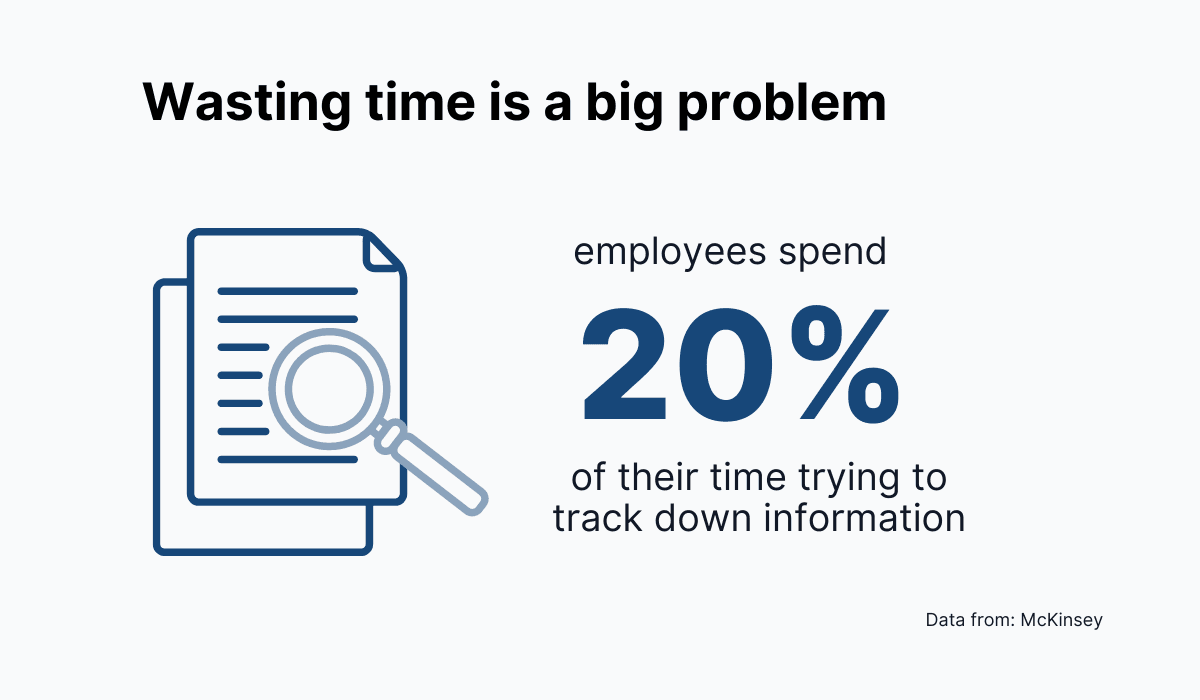
Source: Archbee
If the content is outdated or incorrect, it will clutter your knowledge base, and it’ll be difficult for your team members to find the necessary information.
And once they rate the content of the knowledge base as irrelevant, you’ll have a hard time convincing them again that they can consult it in their work.
Therefore, updating the content in your knowledge base should be something that you do regularly.
You can assign one or more employees to keep an eye on when it’s time for revisions, or you can harness the power of technology and use the specific tools to keep you notified.
Archbee has a unique feature called documentation verification exactly for that purpose.
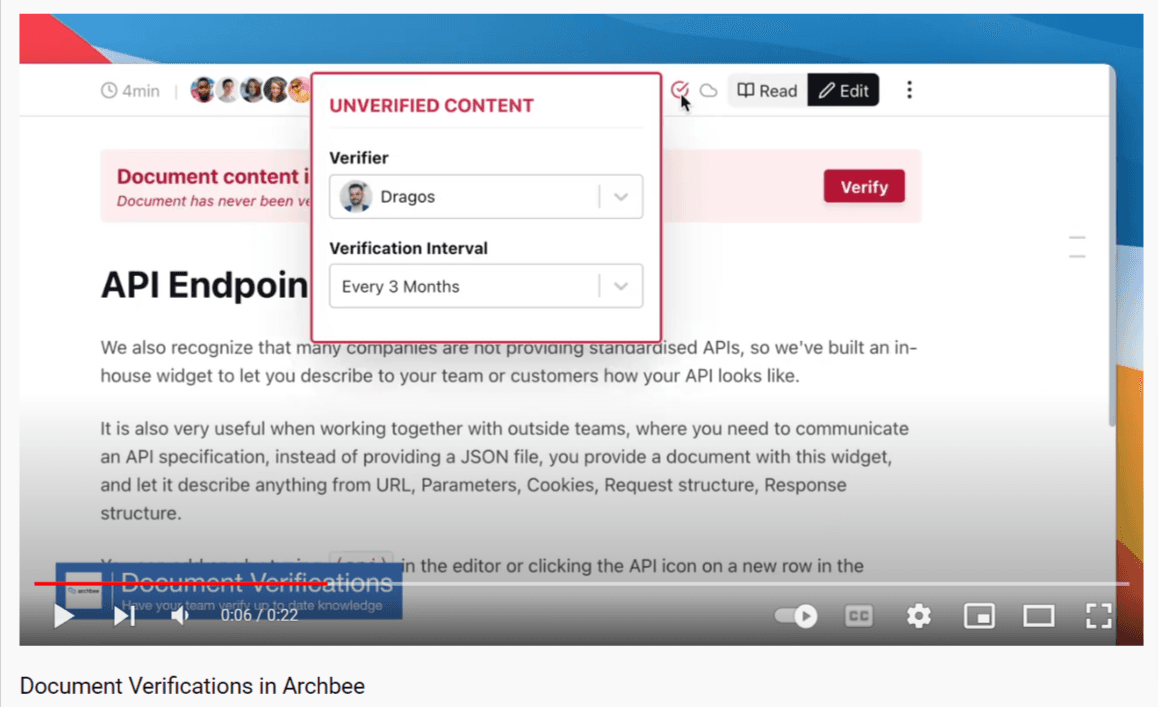
Source: Archbee on YouTube
All you have to do is select team members who’ll be in charge of updating the knowledge base and select the time they get notifications. After that, Archbee will inform them automatically when it's time for changes.
Regular revisions and updates will ensure that your knowledge base stays relevant. They don’t take much time, yet go a long way in keeping your knowledge base a reliable source of information for all your employees.
Measure the Performance of Your Knowledge Management
With the finishing touches of updating the content, your knowledge base is finally up and running.
But how do you know that it’s effective and provides value to the employees? Is there a way to measure its performance?
The problem with measuring your knowledge management is that some aspects of it are slightly less tangible.
Nevertheless, there are ways you can track the effectiveness of your knowledge base, and one of the most reliable ones is contribution.
Examining how many articles are published monthly, how many employees are contributing to creating content, and which type of content is the most popular, will give you an indication of whether your workforce is actively participating in maintaining your knowledge base or ignoring it.
Many documentation tools have tracking features and offer statistics about the most searched content.
For example, Archbee has Search Analytics which informs admins about the most popular content and most common phrases the employees are searching for.
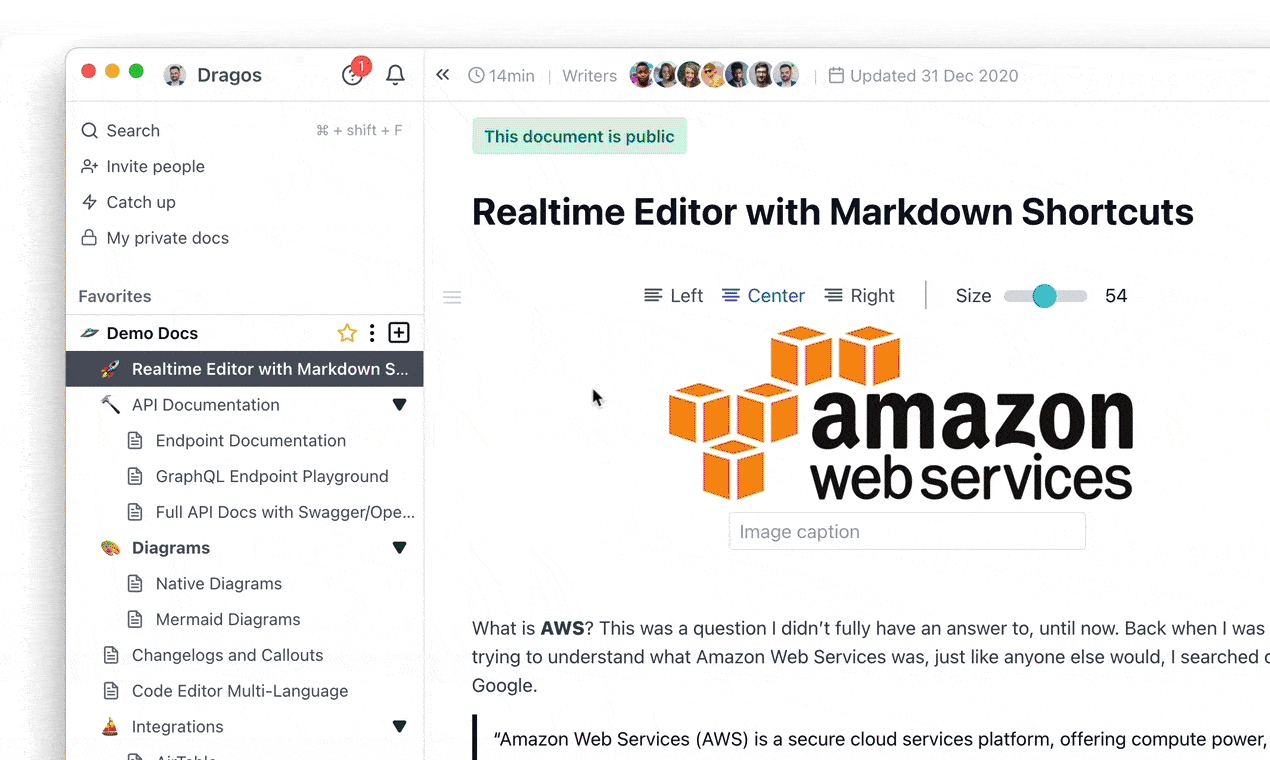
Source: Archbee
Search Analytics provides admins valuable data about the usage of the knowledge base and sheds light on how often employees are engaging with the platform.
Another way you can track the performance is by looking at interactions. Nowadays, many companies use intranet software to manage collaboration and communication among team members.
In most cases, the software enables them to interact with the content, as in the example of Noodle.
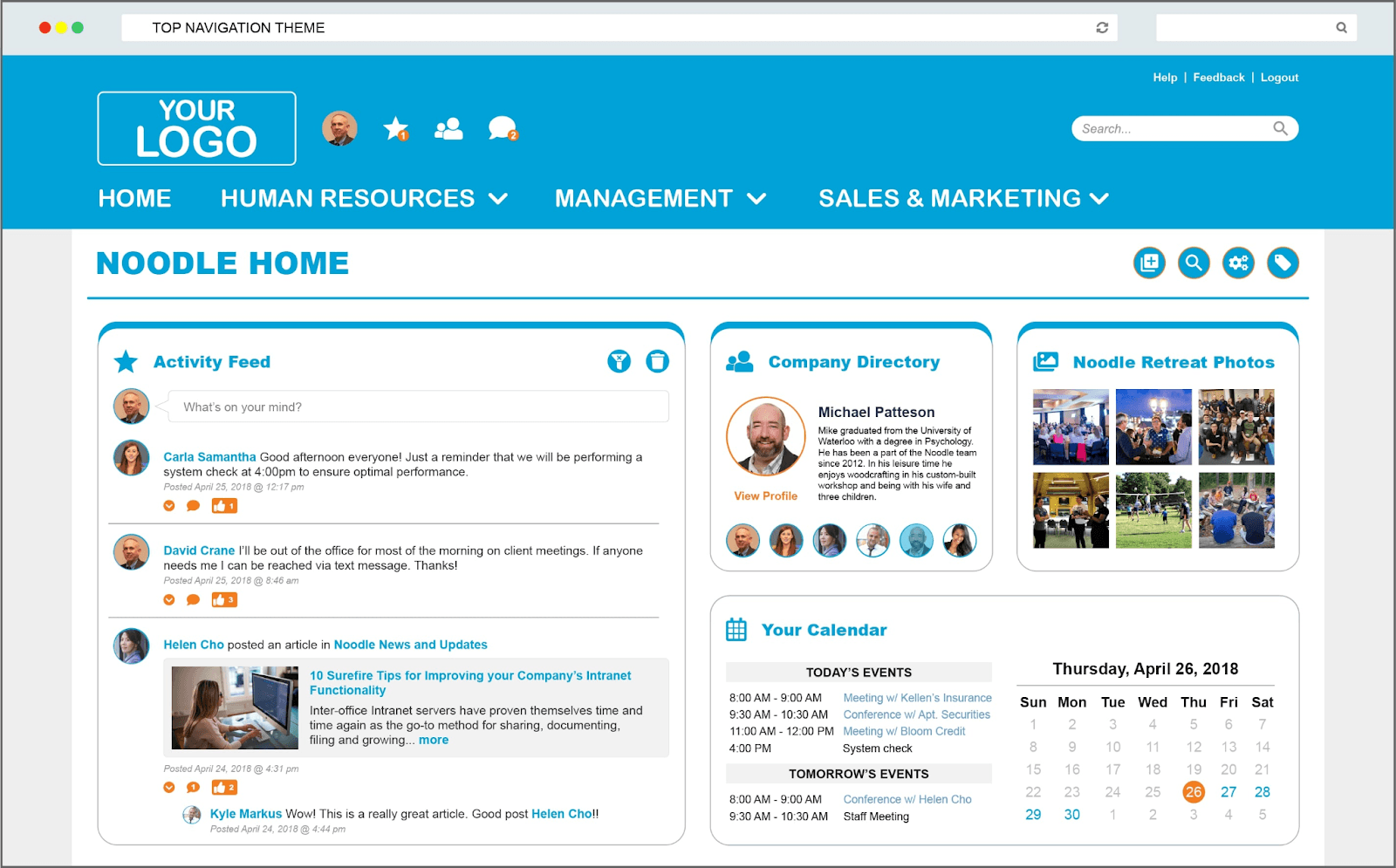
Source: Vialect
As you can see from the picture, when you share an article in Noodle, other team members can interact with the post, in the form of comments or likes.
Checking how many times employees shared an article from the knowledge base platform and how other team members reacted to it will give you valuable information about the performance of your knowledge base.
Don’t feel discouraged if your knowledge base isn’t performing as well as you have anticipated. It takes time for the employees to become familiar with its benefits and advantages. Over time, we are sure that great results regarding performance will follow.
Conclusion
Implementing a winning knowledge management system takes a lot of time, effort, and resources. However, the benefits can be outstanding.
Companies that have established a knowledge base repository for their business notice tangible results very quickly in the form of more engaged employees, better collaborative culture, and reduced costs.
In this article, we walked you through the 7-step process that will help you manage knowledge in your company with ease. Remember, although knowledge management is an ongoing journey, it is one that is worth taking as it brings numerous advantages to your company.
Frequently Asked Questions
A strong knowledge management system turns scattered know-how into a reliable, searchable resource that teams use every day. Key benefits include: - Lower costs by reducing duplicate work, rework, and support load - Higher productivity through faster answers and fewer interruptions - Better, faster decisions with trusted, centralized information - Stronger innovation by connecting ideas and lessons learned - Smoother onboarding and continuity when people change roles or leave - More consistent customer and employee experiences - Improved compliance and risk management with current, controlled content - Greater engagement in hybrid/remote settings thanks to anywhere access



